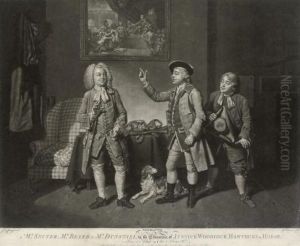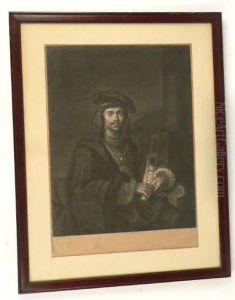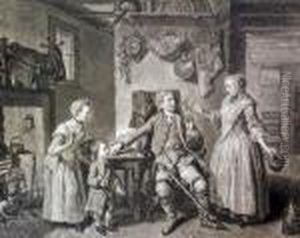Johann Gottfried Haid Paintings
Johann Gottfried Haid was an Austrian artist, engraver, and publisher known for his skill in mezzotint, a printmaking process. Born in 1710 in Kassel (present-day Germany), Haid was part of an artistic family; his father, Johann Jacob Haid, was also an accomplished engraver and painter. The Haid family moved to Augsburg, which was one of the centers for printmaking in Europe during the 18th century. It was here that Johann Gottfried would learn the art of engraving and develop his expertise.
Johann Gottfried Haid's work is characterized by its fine detail and rich tonality, which was typical of the mezzotint technique. Mezzotint involves a process of roughening a metal plate in a very controlled way and then smoothing certain areas to create the image. This technique allows for subtle gradations of tone and is particularly well-suited to capturing the soft textures of skin and fabric, making it an ideal medium for portraiture.
Haid's body of work includes portraits of notable figures of his time, as well as genre scenes, landscapes, and religious subjects. He often collaborated with other artists, translating their paintings into prints. Haid was not just an artist but also a businessman, running a publishing house that helped disseminate his and others' prints throughout Europe, contributing to the spread of artistic styles and ideas.
Throughout his career, Johann Gottfried Haid received various commissions from the European aristocracy, which suggests that he enjoyed a certain level of prestige and recognition. His prints were sought after by collectors and connoisseurs of the time.
Johann Gottfried Haid passed away in 1776. Although he might not be as widely known today as some of his contemporaries, his contribution to the art of mezzotint and printmaking during the 18th century was significant. His works can be found in various art collections and museums, where they continue to be studied and appreciated for their technical mastery and historical value.


